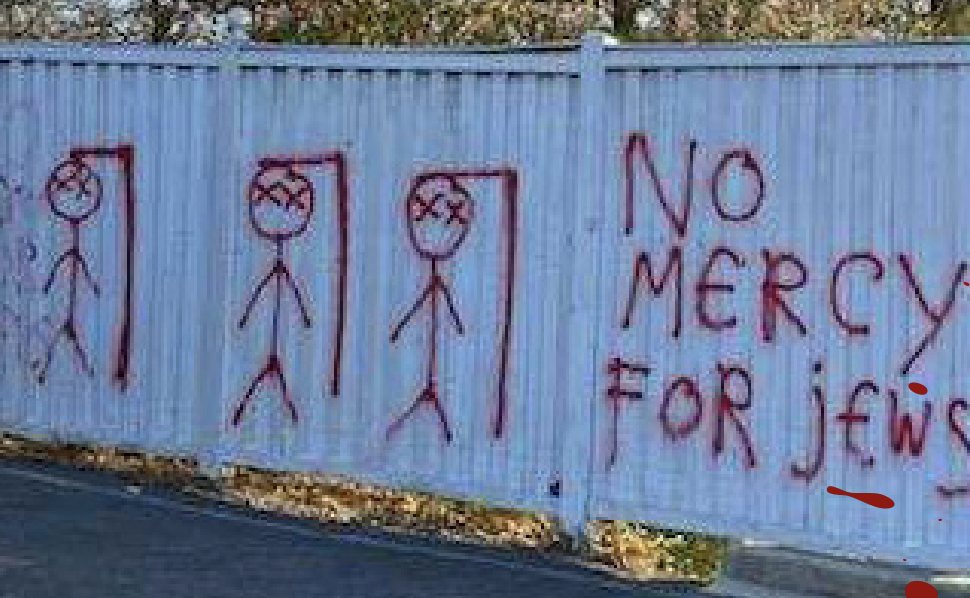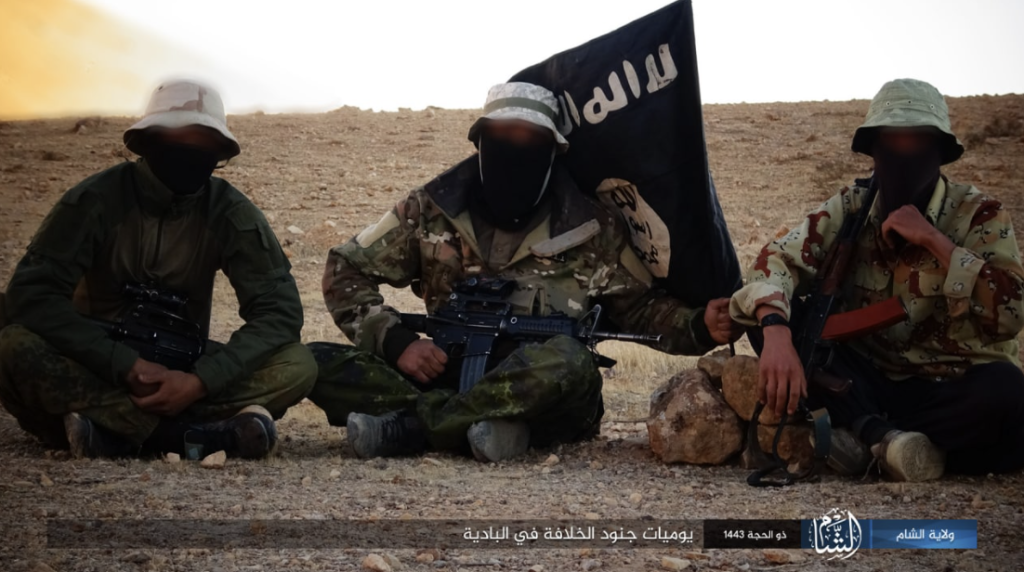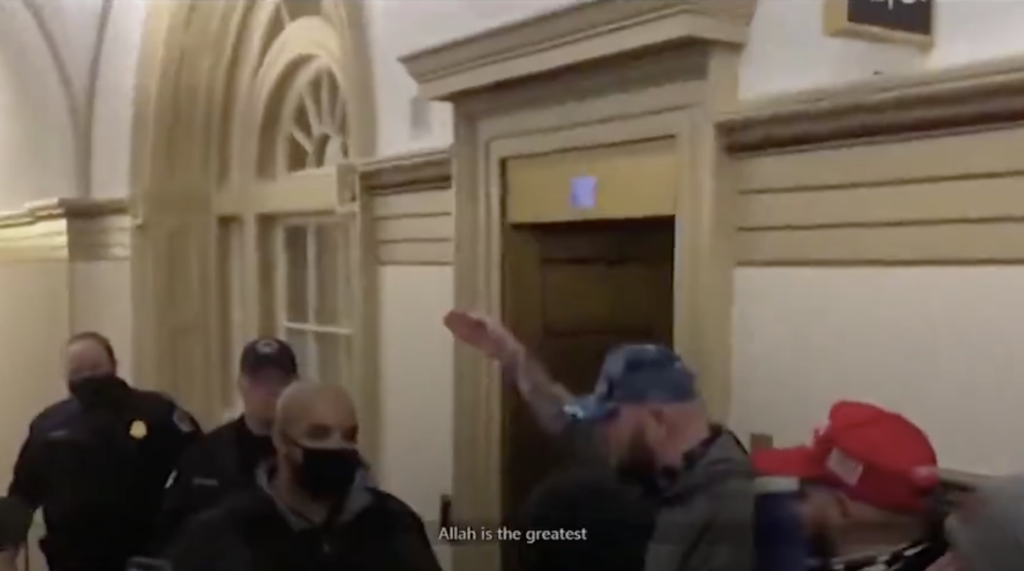Just five years ago, a year-ahead terror outlook would have largely focused on the threat posed by lone actors operating out of allegiance to Islamist terror groups. After all, 2017 saw the retaking of Mosul and Raqqa as ISIS struggled to hold on to its physical caliphate, as well as the Westminster Bridge and London Bridge vehicular attacks, the Manchester Arena suicide bombing, the Barcelona attacks, the Hudson River Park bike path truck attack in Manhattan, the New York subway pipe bombing, and more. But that year also gave glimpses of the evolving terror landscape to come with the neo-Nazi vehicle attack on opponents in Charlottesville, the shooting of GOP lawmakers practicing for the annual Congressional Baseball Game, the sword murder in New York by a Maryland white supremacist who said he wanted “racial world war,” and the racially motivated shooting of Indian engineers in Olathe, Kansas.
Fast-forward to 2022, and the attacks and perpetrators as well as the makeup of the extremists waiting in the wings reflects the growing complexity of the terror landscape, the ideological “hodgepodge” as termed by FBI Director Christopher Wray, and the threat diversity that complicates efforts to intercept plots in the planning stages. There was the grocery store mass shooting targeting a Black neighborhood in Buffalo, the mass shooting targeting an LGBTQ nightclub in Colorado Springs, the attacks on two power substations in North Carolina that plunged tens of thousands of residents into darkness, and the Colleyville synagogue attack by a hostage-taker who traveled from Britain — at the beginning of a year that saw an escalation in antisemitic incidents. And to close out the year, a 19-year-old from a small Maine town who reportedly dreamed of joining the Taliban is accused of attacking three NYPD officers with a machete outside a Times Square security checkpoint on New Year’s Eve.
The hodgepodge of diverse and dynamic threats in the coming year requires unraveling some key areas of concern:

Copycats
Out of the attacks in 2022, two stood out as explicitly stating that inspiration for their attacks came from other killers before them: Payton Gendron, the Buffalo supermarket killer who declared in a manifesto that Christchurch mosque shooter Brenton Tarrant’s livestream “started everything you see here,” and Juraj Krajcik, who killed two people outside of a Bratislava LGBTQ bar in October and stated in his own manifesto that his “two inspirations to carry out an operation” were Tarrant and Poway synagogue shooter John Earnest — but the “final nail in the coffin” was Gendron, who “gave me the final nudge, allowing me to overcome my own indecision and begin seriously working towards carrying out an operation.” Both Gendron and Krajcik were hailed by accelerationists as “disciples” of Tarrant and as “saints” — in which accelerationists “canonize” white killers who meet certain criteria including deliberate intent, motive, inflicting at least one death, and having a neo-Nazi, white nationalist, or far-right anti-system worldview.
The copycat threat is about emulation, recognition, and passing the baton to the next killer. It’s not unique to domestic terrorists: After the 2016 Pulse nightclub shooting, ISIS adherents offered a CD-ROM package of all photos, memes, video, and ISIS articles related to killer Omar Mateen in a push for others to copy his heinous crime. The al-Qaeda in the Arabian Peninsula Inspire “Praise & Guide” series has reviewed attacks such as the 2021 Boulder supermarket mass shooting to assess what was done well by the attacker and what could have been done to inflict more harm.
Regardless of the ideological affiliation, the extremist encouragement for would-be terrorists to copy other killers is at its core a push for them to take the crimes one step further — whether with a higher death toll, greater damage to infrastructure, a longer livestream, new tactics or weapons, or an especially symbolic target. Recent accelerationist encouragement to copy the 2019 El Paso Walmart mass shooting, for example, suggested “a Crusius-style attack” on an establishment at which migrants are present “every week. A sniper shooting every day, slowly taking its toll.”

Critical Infrastructure Systems
A banner draped from an overpass in Moore County, N.C., a couple weeks after an outage sparked by saboteurs declared “bring it all down” along with neo-Nazi imagery and a link to the neo-Nazi accelerationist National Socialist Resistance Front. After rounds fired at two substations in the county Dec. 3 knocked out power to 40,000 homes and businesses for days, accelerationists cheered the incident and encouraged more attacks on electricity infrastructure. But it was hardly a new call for action: One accelerationist handbook circulated last summer called for shooters to bypass softer targets in favor of causing chaotic blackouts by emulating on a broader scale an unsolved 2013 sniper attack on a California transmission substation. A larger subsequent handbook released by accelerationists contained attack threats, tips, or encouragement directed at critical infrastructure sectors, from short memes to detailed instruction. Their messaging is consistent: Infrastructure attacks from small acts of sabotage to larger and well-supplied team operations can be committed with a range of methods and skill levels, and can deliver blows — accelerationists hope — to stability and continuity while terrorizing the population.
But while focusing on the vulnerability of substations and the devastating impact that widespread or extended power outages can have on a community, it’s also a time to think beyond electricity because adversaries definitely are exploring those options. The Department of Homeland Security’s Cybersecurity and Infrastructure Security Agency classifies 16 critical infrastructure sectors “considered so vital to the United States that their incapacitation or destruction would have a debilitating effect on security, national economic security, national public health or safety”: the chemical sector, communications, dams, emergency services, financial services, government facilities, information technology, transportation systems, commercial facilities, critical manufacturing, defense industrial base, energy, food and agriculture, healthcare, nuclear reactors/materials, and water and wastewater systems. That larger accelerationist guide, for example, discussed ways to attack trains, cell towers, trucks and depots, water treatment and distribution, commercial business, communications, electrical systems, HVAC systems, and roads, bridges and highways. The guide stated that attackers are aiming for two types of impact: “the suffering your target will withstand, including the cost associated with restoring itself,” and “the heightened security on the local and national level in reaction to the demonstrable damage that can be done toward this target.”

Mainstreaming Extremism
In July 2019, HSToday reported on flyers signed by Loyal White Knights of the Ku Klux Klan and dropped in front of homes during overnight runs outside D.C. in Loudoun County, Va. The leaflets decried a grassroots push to rename Harry Flood Byrd Highway (Virginia State Route 7), named for the late segregationist governor and senator, declaring “leave our history and heroes alone” and “preserve our culture.” They added a plug to “kontact the experts” — attempting to seize on highly charged debates about whether historical monuments should be removed or sites renamed. They saw an opportunity for a bridge issue: an issue that extremists exploit in order to bring others closer to their side by luring new recruits, to bring their side closer to others in an attempt to move their ideology or group into the mainstream, or to simply gain tacit sympathizers and people passionate about the issue who may be willing to look the other way at a new ally’s hateful core beliefs.
Recently, neo-Nazis and white supremacist groups have been trying to make drag-queen events including brunches, fundraisers, and story hours their own bridge issue, demonstrating outside of drag shows with banners and Nazi salutes, chanting at passersby and harassing attendees, and posting photos and videos of their actions online. First and foremost, these groups would like to woo recruits with these public-facing displays. But also important to them are those who, as seen on social media, will laud the groups for taking some sort of action even if they personally don’t ascribe to all of the group’s views or openly call themselves allies. Groups who have been protesting have also celebrated violent acts inflicted upon the LGBTQ community, so it can be a short bridge to cross from verbal harassment to either perpetrating or inspiring future acts of violence.
We also saw this past year with the mainstreaming of antisemitism how latent prejudices can build bridges between vocal extremists and those who have become willing to defend that bias. The year ended with scores of online memes lauding Ye’s antisemitic comments and Hitler praise as neo-Nazi creators even photoshopped the rapper into Third Reich regalia. Mainstreaming can make extremism worse both in terms of recruitment — if more people see ascribing to the ideology as now hip or acceptable — and when it comes to convincing more people to look the other way at the deeds of domestic extremist movements that declare they’re acting for the betterment of society in one breath and then call for the extermination of Blacks and Jews in the next.
“A full 63 percent of religious hate crimes are motivated by antisemitism — targeting a group that makes up just 2.4 percent of our population,” FBI Director Wray said in November. “Foreign terrorist organizations like ISIS have promoted antisemitic violent extremism for decades. They continue to target Jewish Americans in their attack plots. But we also confront the threat of people here, on our soil, whose hateful views — often paraded online — boil over into acts of violence.”

Islamist Extremist Evolution
ISIS and al-Qaeda both suffered the loss of their top leaders in 2022, with ISIS leader Abu Ibrahim al-Hashemi al-Qurayshi killing himself during a U.S. raid in February and his successor Abu al-Hasan al-Hashimi al-Qurashi killing himself during a Free Syrian Army operation in October, and al-Qaeda leader Ayman al-Zawahiri dying in a U.S. drone strike on his home in Afghanistan in July. As martyrdom aspirations are baked into their operating philosophies, Islamist terror groups are prepared to move to the next leader in line and, while losing a figurehead, could view the transitions as a chance to inject younger blood into the upper ranks.
As U.S. Central Command noted in its year-end report of operations against ISIS in Iraq and Syria, the fight against this group in its post-caliphate era is far from over. First, there are the provinces that have entrenched in regions around the globe, “most significantly” in Afghanistan and Africa. Then there are the ISIS operatives still being fought in Iraq and Syria — there was nearly an operation per day last year by CENTCOM against these forces. Then there is “a literal ‘ISIS army’ in detention” in Iraq and Syria consisting of more than 30,000 ISIS leaders and fighters. And there are the more than 25,000 children in Syria’s al-Hol camp who are in danger of being radicalized by ISIS and forming the next generation of fighters — or cubs, in ISIS lingo.
While this occurs in the military operations sphere, ISIS, al-Qaeda, and other Islamist extremist movements continue to utilize distance recruitment and training in order to inspire operatives in any corner of the world. Much of the ISIS propaganda that circulates nowadays is recycled “greatest hits” material, so to speak, with fresh content regularly produced in a weekly newsletter from the core of the group and magazines and videos largely produced by provinces. These publications have mostly concentrated on regional grievances, recruitment, and incitement, but have also added international elements whether in promotion of other claimed ISIS provinces or inciting attacks in the West. ISIS and al-Qaeda both expressed delight after the Jan. 6 Capitol riot and have sought to egg on extremism from the sidelines ever since. Over the past year, ISIS Khorasan in Afghanistan declared the United States a “banana republic” ripe for an “Islamic storm” after the execution of a search warrant at former President Trump’s Mar-a-Lago residence, called mass shootings and other gun violence in America an “‘unwanted’ population control program” and divine “tit for tat,” echoed the QAnon belief that a cabal of pedophiles is rooted in Hollywood and the government, called “social media warfare” critical to counter the pull of “enchanting” social media influencers, and declared that disseminating and weaponizing disinformation is a “duty” of jihadists.

Blurred Ideological Lines
See the hodgepodge above. Or, wade into online channels and chat forums where accelerationists are distributing ISIS videos because they admire the tactical advice and the jihadists’ passion and ruthlessness, or where posters who claim jihadist underpinnings are lauding the lone-wolf nature and execution of school shooters and replay surveillance videos capturing their brutal attacks ad nauseam. Throw in some ecofascism, incel culture, anti-government extremism, conspiracy theory extremism, antisemitism, anarchism, or neo-Nazism, add in extremists professing to be Christian or pagans or even occultists, and you have everything that is and isn’t a comprehensive threat profile. The Pulse nightclub attack may have been claimed by a killer saying that he was operating on behalf of ISIS, but it’s now hailed by domestic extremists as a model for striking at the LGBTQ community. ISIS admired the 2017 massacre at the Route 91 Harvest country music festival in Las Vegas so much that the group claimed for months that shooter Stephen Paddock was “a soldier of the Islamic State who carried out the attack in response to calls for targeting coalition countries,” even as it became readily apparent that Paddock had no apparent ideological motive. The Taliban victory in Afghanistan has been hailed over the past year by domestic extremists who want to bring down the government in the United States.
“The old-school world of kind of people with some purity of radical ideology then turning to violence is often giving way to people who have kind of a jumble of mixed-up ideas,” Wray told the Senate Appropriations on Commerce, Justice, Science, and Related Agencies in May. “And, you know, we’ve seen cases where somebody one month is saying they’re an ISIS supporter, and then the next month they say they’re a white supremacist.”
And while extremists explore all the streams of extremism and cobble together their unique extremist profiles, tutorials including guides on how to construct weapons and explosives and inspirational materials from ideological movements that may not seem to align are shared online in furtherance of extremist beliefs turning to violent action.

Tactical Diversity
While extremists explore their ideological profiles, groups and movements are also trying to reach extremists where they’re at in terms of skills and ability to conduct attacks. ISIS propaganda, for example, encouraged traditional bomb-making and weapons training early on, but as the group and its focus on lone actors who would never journey to the physical caliphate evolved ISIS was suggesting any novel attack method that might stick — from posing as a Craigslist landlord to lure victims to utilizing poisonous plants or venomous snakes to snap their foes. The crux of this see-what-sticks strategy was to encourage terrorists to get creative — not getting caught in the planning stages buying bomb ingredients or plowing through hundreds of rounds at the range — and also to meet potential attackers where they’re at if they have circumstances such as not being able to obtain a firearm or build an IED.
Domestic extremists also have been promoting the myriad ways in which adherents who have limited or exceptional skills can support their goals of infrastructure sabotage, striking high-value targets, or killing perceived racial, religious, or political foes. Neo-Nazi accelerationists lauded William Mallet, a 69-year-old retired train operator who killed three members of the Kurdish community and wounded three more in a Paris shooting Dec. 23, for finally acting on how he “always wanted to assassinate migrants and foreigners,” according to statements he gave to detectives after his arrest.
While trying to bring terror attacks down to the level of attainable goals, extremist groups are also reaching high with stated aspirations to utilize chemical, biological, or radiological agents to some degree. Dirty bombs were called holy grails in the aforementioned 261-page accelerationist guide because of the potential for higher casualty counts and larger-scale disruption or chaos intended to further their goals.

Political Violence
Midterm elections in late 2022 thankfully did not see the sort of violence that could reasonably have been expected with heated contests, hotter rhetoric, and close vote tallies. But anti-government extremism, violence or threats centered around a specific political issue, violence or threats against politicians or election workers, and accelerationist ideology that believes in destruction of the current system are in motion whether or not there is an election just around the corner. And with the second anniversary of the attack on the U.S. Capitol days away, there are still 438 of 909 cases against Jan. 6 defendants still pending in the courts, according to the GWU Program on Extremism’s Capitol siege tracker, amid claims by some defendants and their supporters that they are “political prisoners.”
The concern is at what point fury directed at the government itself or the players boils over into violence, and whether or not a specific catalyst — such as the certification of votes happening that Jan. 6 — is even needed to push a potential attacker to that breaking point. This could manifest in attacks on government facilities or think tanks, political offices such as the Capitol Hill pipe bombs, facilities tied to specific hot-button issues, or people — as seen in the October break-in and hammer attack on Paul Pelosi. The man accused of assaulting the husband of House Speaker Nancy Pelosi (D-Calif.) at their San Francisco home allegedly compared himself to a Revolutionary War fighter battling “tyranny” and told law enforcement that he intended to interrogate and likely break the kneecaps of Speaker Pelosi to “show other members of Congress there were consequences to actions.”





